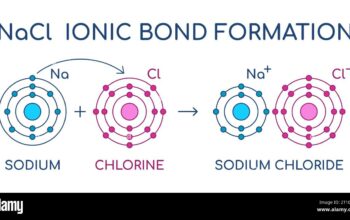The quest to build an atomic clock at home may seem audacious, yet it epitomizes the intersection of theoretical physics and practical engineering. Atomic clocks are renowned for their unparalleled precision, utilized in global positioning systems, telecommunications, and even the definition of the second itself. Despite their complexity, exploring the possibility of replicating such a device in a home workshop warrants an investigative examination of the various components, underlying principles, and methodologies involved.
Understanding Atomic Clocks
To embark on this intellectual journey, it is imperative to grasp what constitutes an atomic clock. At its core, an atomic clock leverages the vibrations of atoms—particularly cesium or rubidium—as its timekeeping element. These atoms oscillate at a characteristic frequency when exposed to microwave radiation, allowing for highly precise measurements of time. The cesium atomic clock, for instance, defines the second based on the oscillation of cesium-133 atoms, which oscillate at approximately 9,192,631,770 cycles per second.
Types of Atomic Clocks
Several variations of atomic clocks exist, each differing in complexity and operational mechanisms:
- Cronometric Atomic Clocks: The most common type, these clocks measure the frequency of microwave radiation emitted by atoms. They are the backbone of GPS systems.
- Laser-Cooled Atomic Clocks: Advanced and high-precision instruments that use lasers to cool atoms to near absolute zero, significantly improving measurement accuracy by reducing thermal noise.
- Ion Trap Clocks: These use electromagnetic fields to trap charged atoms, providing extreme precision due to the minimal motion of the atoms.
While each of these atomic clock types offers remarkable precision, the sophisticated scientific tools and techniques required for their construction often place them beyond the reach of amateur experimentation.
Feasibility of Home Projects
The aspiration to construct an atomic clock in a home environment must confront numerous practical limitations. Creating a laboratory-level atomic clock necessitates specialized equipment, such as high-frequency oscillators, microwave generators, and piezoelectric transducers, not commonly found in a regular household. Furthermore, the requisite knowledge of quantum mechanics and atomic physics may pose a barrier to many aspiring home clockmakers.
However, simplifications can lead to alternative projects. While traditional atomic clocks may be impractical, DIY enthusiasts can explore various resonant clock designs that emulate atomic behavior on a much smaller scale. Such projects provide excellent educational value, allowing for the exploration of fundamental principles of timekeeping without the overwhelming complexities associated with actual atomic clock technology.
Possible DIY Alternatives
For those intent on pursuing a timekeeping project, several avenues may yield more feasible outcomes than an atomic clock:
- Quartz Clock Circuit: Quartz crystals are used in numerous electronic devices. By developing a circuit based around a quartz crystal oscillator, one can create a highly accurate clock that demonstrates principles of resonance and frequency stabilization.
- GPS Timing Modules: GPS modules can provide accurate timekeeping by utilizing satellite signals. Integrating such a module into a circuit can serve as a practical introduction to real-time, atomic-level accuracy without needing deep scientific resources.
- Timekeeping Using Lasers: A straightforward laser-based project can explore the interference of light through various mediums, yielding fascinating results regarding how time can be measured and perceived.
Theoretical Underpinnings
Understanding the principles grounded in quantum mechanics is paramount for any work related to atomic timekeeping. Atoms, inherently quantum objects, follow specific statistical distributions. The Heisenberg Uncertainty Principle signifies a trade-off in the precision of measurement; as one attribute (e.g., position) becomes more precisely known, another (e.g., momentum) must become less so. This fundamental tenet becomes pivotal when determining how accurately and reliably time can be measured via atomic oscillations.
Educational Value
Even if the goal of constructing an actual atomic clock proves infeasible, the pursuit offers tremendous educational opportunities. Shiploads of knowledge await those who delve into the fields of classical mechanics, electromagnetism, and quantum physics. Learning how atomic interactions lead to coherent oscillation sets the stage for deeper exploration into the world of timekeeping and its implications across various scientific domains.
The journey of understanding the theoretical concepts behind atomic clocks may serve as an illuminating experience for students and hobbyists alike. Engaging with projects focused on electrical engineering principles, circuit design, and the manipulation of atomic behaviors drives home practical applications of physics.
Conclusion
The dream of building an atomic clock at home is laden with challenges, requiring advanced technology, ample resources, and high-level scientific knowledge. Nevertheless, by pursuing alternative DIY projects inspired by atomic behavior, one can explore the fascinating world of timekeeping. Such ventures not only cultivate a greater appreciation for physics but also stimulate critical thinking and innovation, which are hallmarks of scientific progress.












